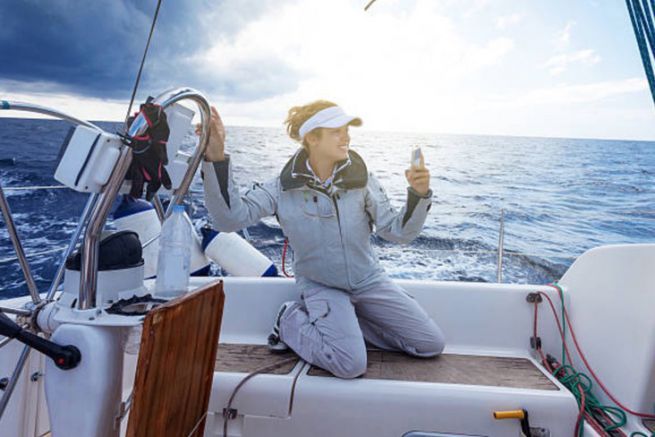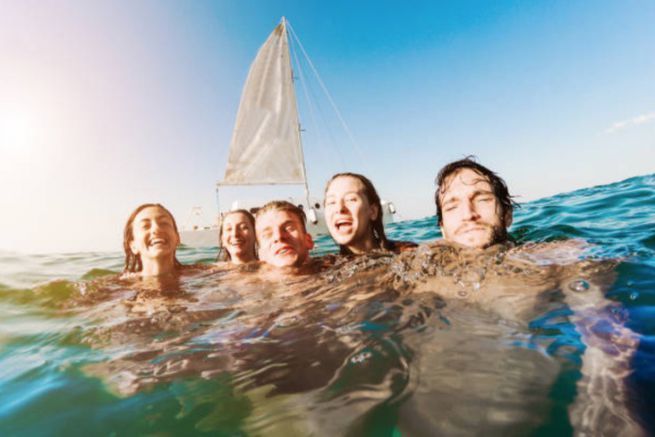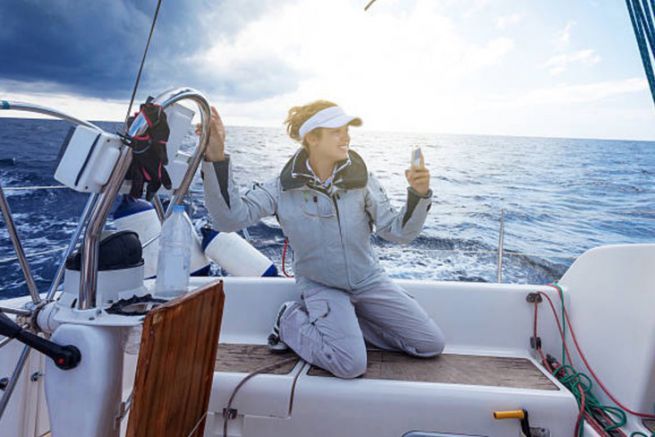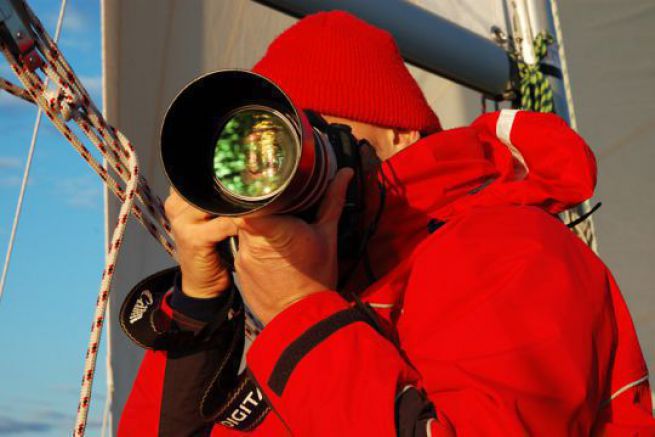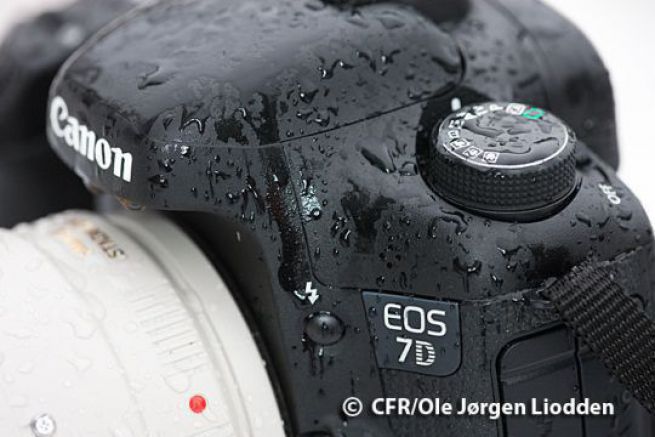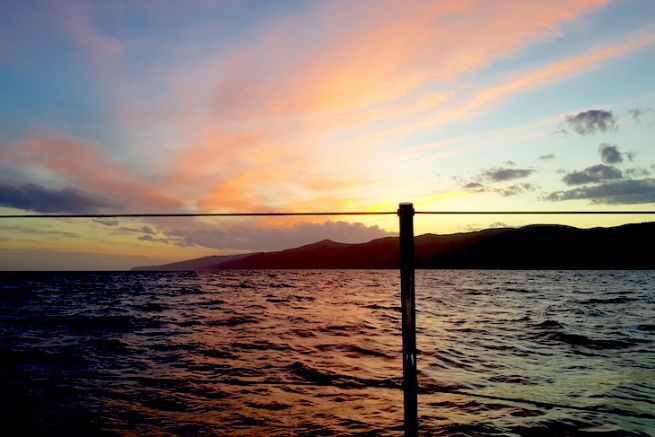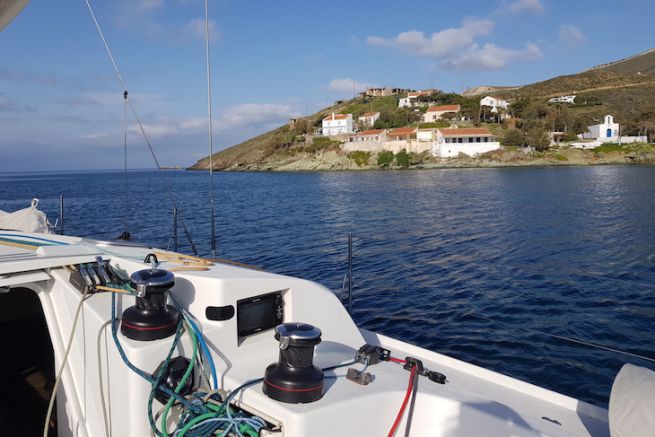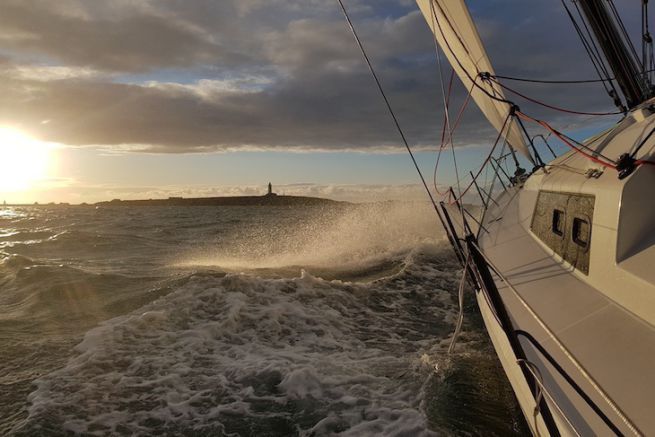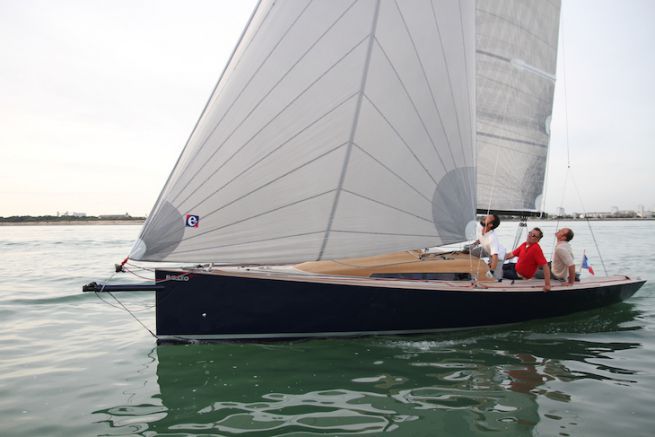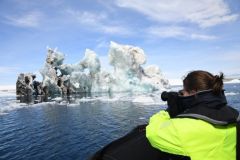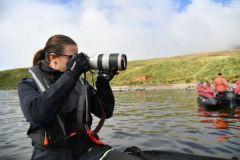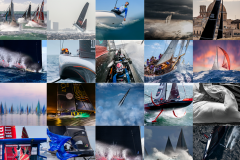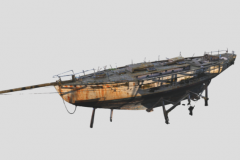If you don't have a camera, you have a smartphone. It's the first solution, so you don't need a budget. The advantages are many, the disadvantages too. The new generations of telephone have 2 focal lengths allowing to have a very small zoom without loss of quality and are protected from water splashes. The artificial intelligence proposed by Apple or Google makes it possible to take photographs with one hand without adjustment, practical to be held with the boat..
A phone is also a GPS. To be able to locate each of the photos with the trace of its navigation is a really appreciable plus. Who says telephone, generally says Internet network at least near the coast. Sharing your photos in real time by e-mail to your family or on social networks like yacht-club.com can even be reassuring. The connection also allows you to automatically send photos just taken on the cloud. It's the safety of not losing them if the phone falls.
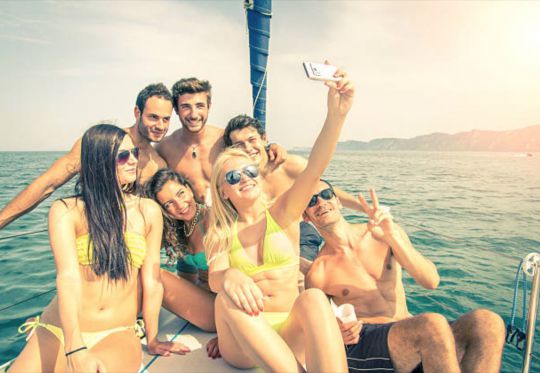
Because there are more cases of loss than you think.
A telephone in the back pocket, a manoeuvre and a POB (Phone-Over-Bord). It's experience to the difference that it was not a manoeuvre, but a nap... (Well, she'll recognize herself). Get him to safety, you tell me Yes, but if it's tidy, it's not very practical for taking pictures.
Another point to consider: battery life.
Keeping a phone in working order is an extra security. Provide an external recharge if the boat does not have a USB plug.
You can use a protective shell, the phone will be protected from water and falls, but the quality of photos taken through a plastic film will be very average. This remains a troubleshooting solution
Many boaters use a tablet for mapping. Applications like Navionics allow you to take pictures and position them directly on your track record. It's fun to relive your navigation. Besides the image quality problems through the shell, the tablet is not very practical to take images, with a two-handed hold. Moreover, it is often not very available, it is a main navigation element
The images will probably have less sharpness, less depth of field than with a reflex, but the camera of his phone allows to access functions like the Live Photo which records a small film a few seconds before and after his photo - ideal to see his mother-in-law in the winch continuously - or the burst mode to be sure not to miss his photo in the action.
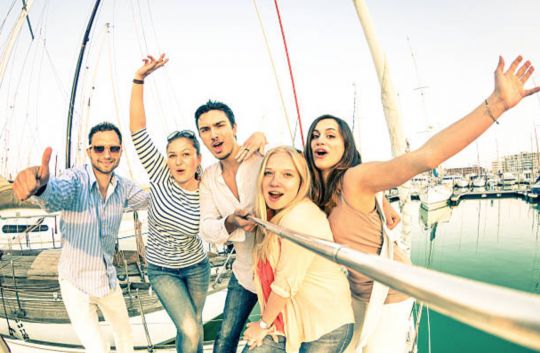
An Internet connection
The smartphone is above all a telephone with an internet connection. Taking photos and distributing them even before stopping over is quick and easy. The photo taken with your mobile phone is perfect for web publishing, on social networks. However, it remains limited to this use. The print quality will not be at all the same and of lower quality.
The phone may not show up if you lose pictures in low light. During night navigation, it is not always possible to turn on the searchlights or use the flash to preserve the night vision of the watch.
The risk of getting blurry photos is important, especially when the subject does not move at the same rate as the photographer (the land seen from a boat for example). Using the Sport mode is a plus, but this program does not exist on all standard phones
With the Smartphone, you can't expect to print posters of your creations, but you can make a film...
You too, if you take your photos at sea with your phone, share your tips and tricks in our forums...
